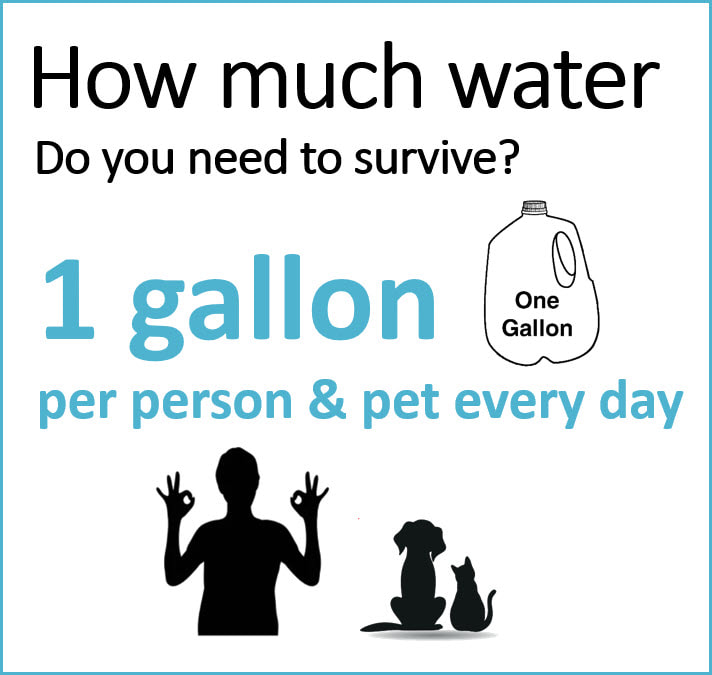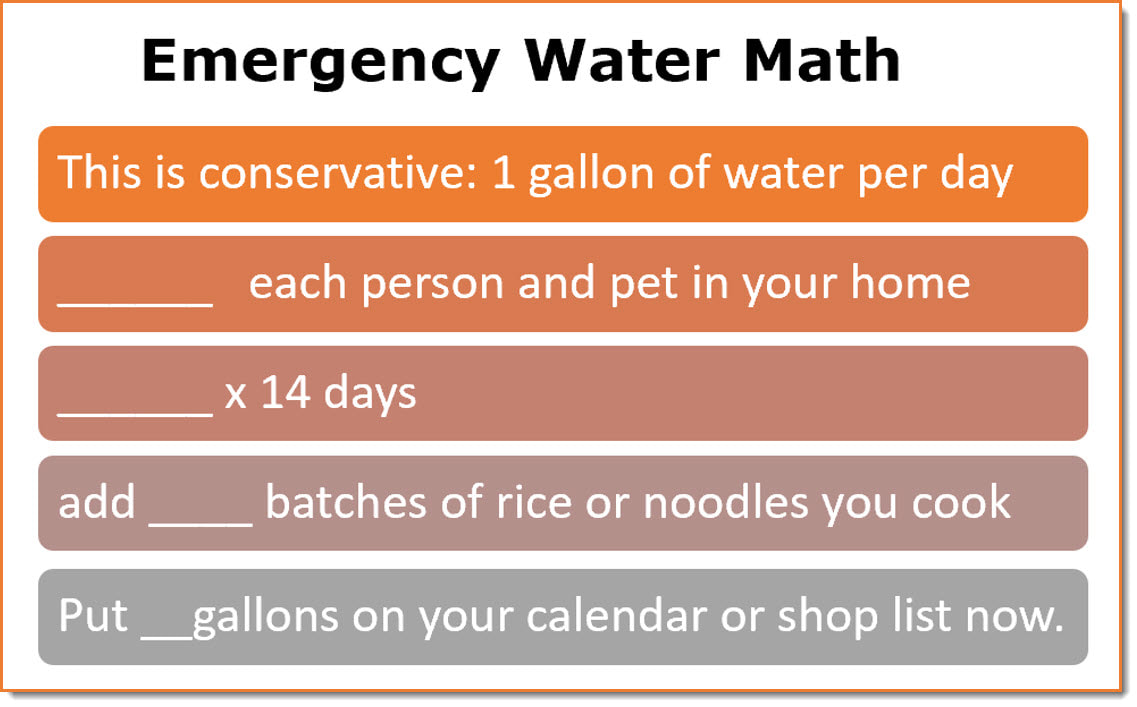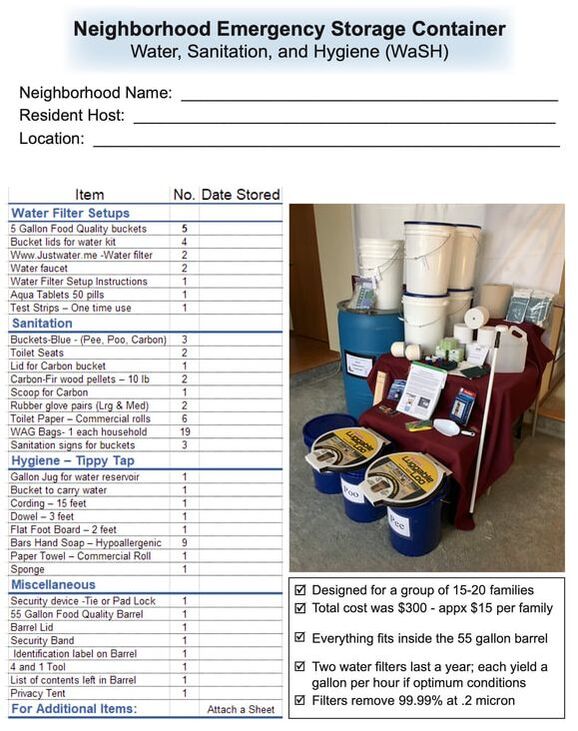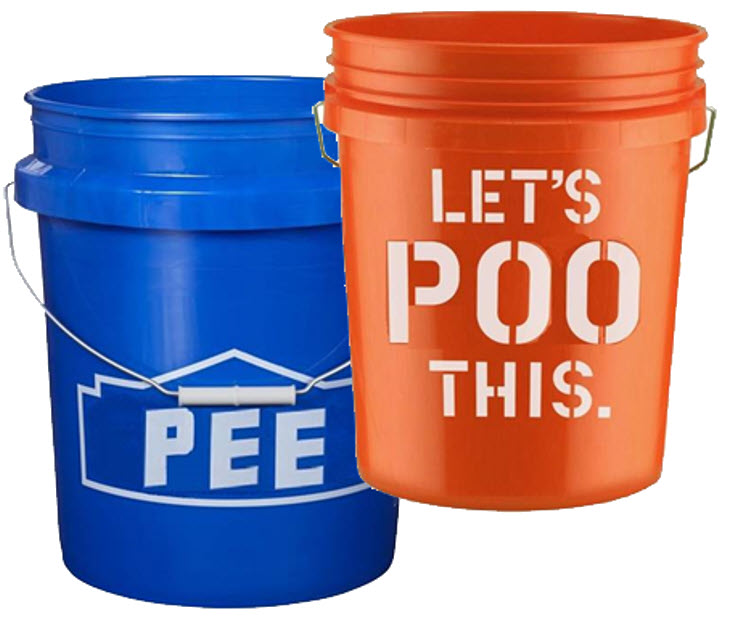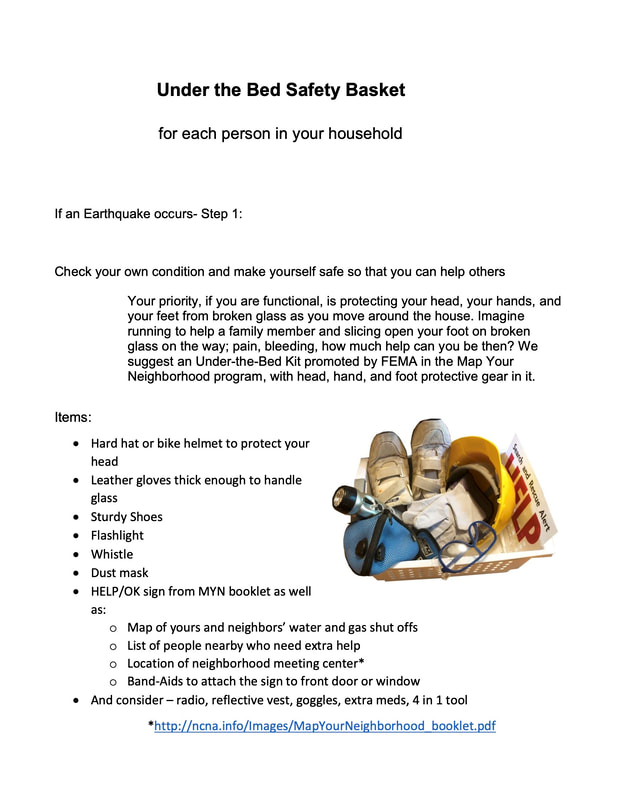Cedar Hills Neighborhood Ready!
WaSH - WATER, SANITATION, AND HYGIENE

When the BIG ONE shakes Oregon, or an ice storm freezes our pipes solid, it will damage our water and sanitation systems. What's your plan for staying hydrated and clean, if the water stops flowing for weeks? You can survive a couple of weeks without food but only three days without water. Access to safe drinking water, sanitation, and hygiene is crucial to human health and well-being. On this page, we include information, videos, and free resources to help you take steps now to ensure you and your family have enough clean water to survive.
Water Survival Skills: What do you do when the water stops flowing?
|
Water is the most important, highest priority for surviving in an extended disaster situation. You can survive a couple of weeks without food but only three days without water. In this online workshop, you'll learn about:
|
The video for this presentation will be coming soon. In the meantime, you can download these free resources, including the slides and speaker notes and the water planning worksheet to help you create your water resiliency action plan.
|
Downloads for this program:
| |||||||||||||||||||
How to Build a Two-Bucket Water Filtration System
In this video, you’ll learn how to build a two-bucket water filtration system, which is important in making sure you have plenty of clean water in the event of a disaster. Barbara Bracken from Tualatin Neighborhood Ready! is joined by Claudia Gray from Cedar Hills Ready! to show you how easy it is to put it all together by yourself. Special thanks to Doug Knight, a fellow Community Emergency Response Team (CERT) member and amateur radio and resiliency volunteer.
Warning: The CDC says that no matter what filter you use, it may not eliminate all biological risks. The filter we used in this video says it has 99.999% bacterial removal, and virus reduction, so adding a boiling cycle or an additional disinfectant cycle is a good additional precaution and is recommended by the CDC. For example, you can use a bleach shock (1/4 teaspoon/gallon water) prior to filtering.
Warning: The CDC says that no matter what filter you use, it may not eliminate all biological risks. The filter we used in this video says it has 99.999% bacterial removal, and virus reduction, so adding a boiling cycle or an additional disinfectant cycle is a good additional precaution and is recommended by the CDC. For example, you can use a bleach shock (1/4 teaspoon/gallon water) prior to filtering.
Water, Sanitation, and Hygiene
How do we go from an average in-home use of 80 to 100 gallons of water per person per day to the recommended ONE gallon? How will you keep things sanitary, when water is in short supply? During our 2021 Cedar Hills Ready’s WaSH program on Water, Sanitation and Hygiene meeting, we show you tricks to make water clean, sanitation safe, and hygiene disease free. Keep the rats out and the kids safe. You’ll find links and related content below.
Program Presentation, Links & Handouts
|
| ||||||||||||||||||||||||||||||||||||||||||||||||||||||
|
Internet Resources & Links for WaSH Topics:
Water
Sanitation Hygiene |
Informational booklet and Inserts to Neighbors Helping Neighbors. Neighborhood Ready!
If you have not done so before, please download these files. Thanks!
If you have not done so before, please download these files. Thanks!
|
| ||||||||||||||||||||||||||||||||||||
Emergencies and disasters - Preparedness
Washington County Emergency Management Preparedness webpage has numerous helpful files and information
Earthquake Country Alliance - California
7 Steps to Prepare
Washington County Emergency Management Preparedness webpage has numerous helpful files and information
Earthquake Country Alliance - California
7 Steps to Prepare
For more information and to get on our email list, contact us at I[email protected] or visit us at www.CedarHillsReady.org. Be prepared, not scared.

